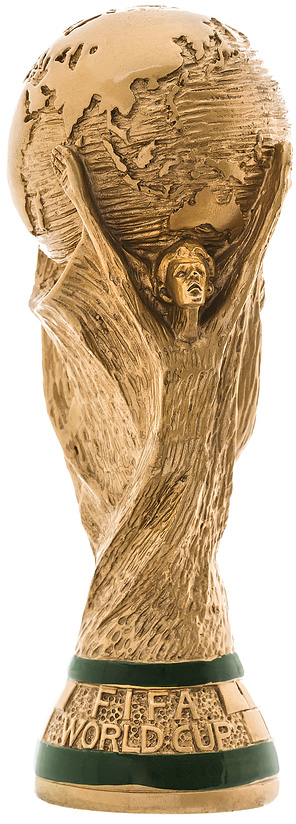How Much Gold is in the FIFA World Cup Trophy?
Arguably the best known and most coveted trophy in the history of sport, the World Cup Trophy has a mythical status among elite footballers and sports fans alike, and its iconic shape and form are synonymous with the World Cup football tournament that takes place every four years.
For such a legendary trophy, it goes without saying that it could not have been made out of anything except gold.
Designed in 1970 by Italian Artist artist Silvio Gazzaniga and the Italian Stabilimento Artistico Bertoni trophy design company (now known as GDE Bertoni), the current World Cup Trophy, officially called the FIFA World Cup Trophy, made its first appearance in the 1974 World Cup held in former West Germany.
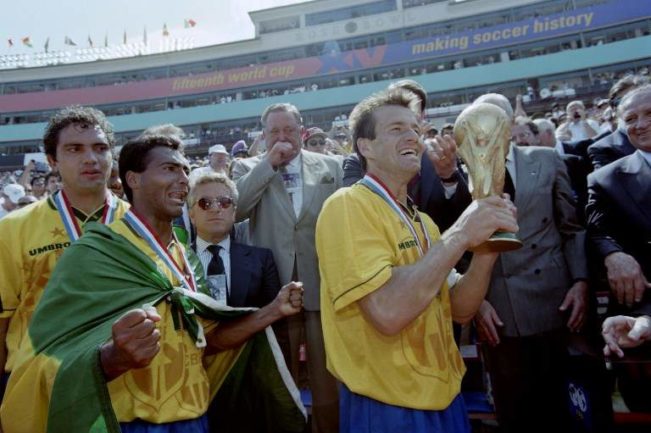
Following Brazil’s win of the World Cup competition in 1970, which added to their World Cup wins of 1958 and 1962, the previous trophy for the competition, known as the Jules Rimet Trophy, passed to the Brazilian Football Confederation in perpetuity. This was in line with a FIFA regulation at the time where a three-time winner earned the right to permanently keep the Cup.
A Universal Symbol
And so in 1970 FIFA embarked on a design tender to find a replacement trophy, receiving 53 submissions from sculptors around the world. Gazzaniga’s winning entry, the now iconic trophy was, in his owns words, “a universal symbol“, “inspired by two fundamental images: those of a triumphant athlete and of the world“.
Gazzaniga’s vision for the trophy, he said, was to:
“reflect the elation of the winning footballer – a man transformed by the enormity of his victory – but without the super human ego. This sporting hero who embraces the world in his arms.“
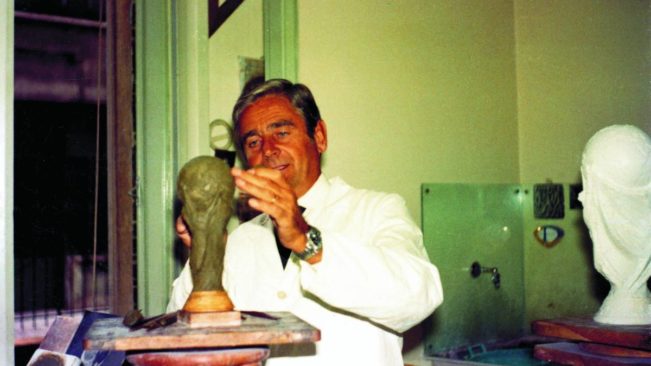
Of the actual sculpture, Gazzaniga explained that:
“The lines spring out from the base, rising in spirals, stretching out to receive the world. From the remarkable dynamic tensions of the compact body of the sculpture rise the figures of two athletes at the stirring moment of victory."
These spiraling lines, said Gazzaniga, would be:
“a human being – the hero – but not alone, because the game and every match is done by two teams, two wills opposing and acting together,”
“Energy, force, strength, dynamism, roughness, agility, speed, success, achievement, victory, triumph. All this had to turn around and embrace the world, who is over all and over every single man.”
Gazzaniga’s sculpture was unlike any traditional sporting cups of the time, having a wide circular base that narrowed and then spiralled upwards in the form of two human figures with arms outstretched in celebration, holding a globe of the world resting on their shoulders, and made entirely of gold. Based on Gazzaniga’s design, the FIFA World Cup Trophy was manufactured by the Milan based Bertoni design house in 1973.
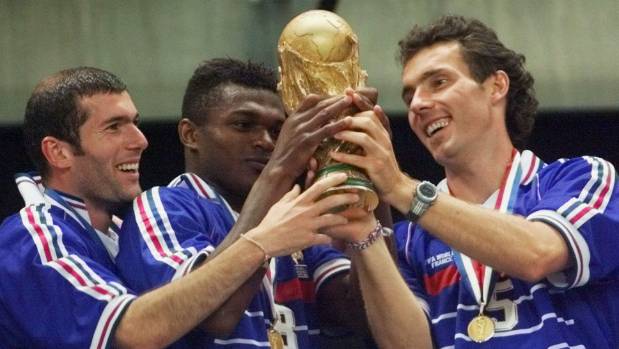
Worth its Weight in Gold
The FIFA World Cup Trophy stands 36.8 cms tall with a base diameter of 12.5 cms. Overall it weighs 6175 grams (13.61 pounds) and has a gold content of 4927 grams (10.86 pounds) of 18 karat gold. The trophy is hollowed, since otherwise, being made of gold, it would be far too heavy to lift. The base of the trophy contains two layers of the dark green semi precious stone malachite.
Given that its 18 karat gold (meaning 18 parts gold to 6 parts of other metals, i.e. 75% gold), there are 3695.25 grams (118.8 troy ounces) of pure gold within the trophy. At a gold price of US$ 40 per gram at the time of writing, the gold within the World Cup Trophy has a current market value of approximately US$ 150,000. But as a unique sporting trophy, the FIFA World Cup Trophy is arguably priceless, so important that nowadays FIFA closely guards the original while presenting a replica to each winning country.
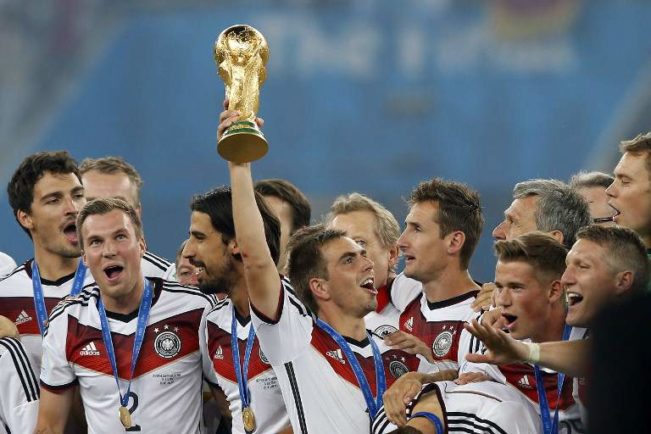
The choice of using gold to create the FIFA World Cup Trophy seems to have been a given. Nowhere within the history of the trophy or its design does it appear to be documented that there was any debate on what Gazzaniga’s design should be made of. The choice of using gold just appears to have been the natural choice for such a unique and important sporting prize.
But this is not surprising. For gold is rare and precious. Gold has inherent value. Gold has been revered in countless civilizations throughout history and has long been associated with the divine sphere. Gold symbolises the pinnacle of human competition and achievement. Gazzaniga knew this when be designed the iconic trophy. FIFA knew this when they chose Gazzaniga’s unique design. Every footballer who has ever played in a World Cup dreams of this golden prize.
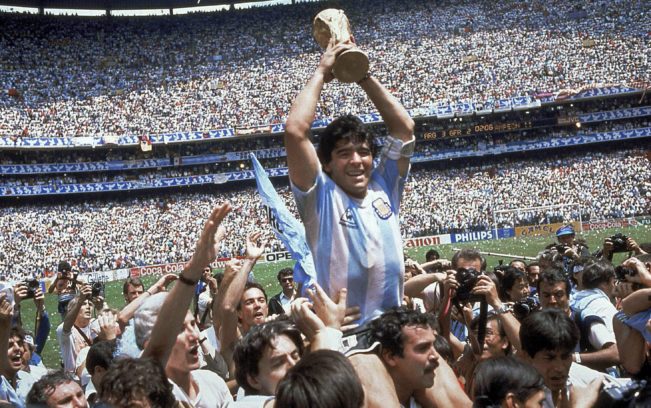
From 1974 to 2014, the FIFA World Cup trophy has been won 13 times. A unique quadrennial football event, in which thirteen elated winning captains have held aloft a World Cup made of gold, not of any other metal. Soon a fourteenth captain will do the same when the winner of the 2018 World Cup final becomes known on Sunday 15th July. And the iconic trophy made of gold will again be in the spotlight, a “universal symbol" as Gazzaniga put it, “at the stirring moment of victory."
Popular Blog Posts by BullionStar
 How Much Gold is in the FIFA World Cup Trophy?
How Much Gold is in the FIFA World Cup Trophy?
 Essentials of China's Gold Market
Essentials of China's Gold Market
 Singapore Rated the World’s Safest & Most Secure Nation
Singapore Rated the World’s Safest & Most Secure Nation
 Infographic: Gold Exchange-Traded Fund (ETF) Mechanics
Infographic: Gold Exchange-Traded Fund (ETF) Mechanics
 BullionStar Financials FY 2020 – Year in Review
BullionStar Financials FY 2020 – Year in Review
 Why It’s Time to Stop Taxing Gold & Silver
Why It’s Time to Stop Taxing Gold & Silver
 Why a Powerful Silver Bull Market May Be Ahead
Why a Powerful Silver Bull Market May Be Ahead
 What’s Driving Gold to All-Time Highs?
What’s Driving Gold to All-Time Highs?
 What You Need to Know About Gold's Long-Term Bull Market
What You Need to Know About Gold's Long-Term Bull Market
 BullionStar Financials FY 2023 – Year in Review
BullionStar Financials FY 2023 – Year in Review




 BullionStar
BullionStar 3 Comments
3 Comments